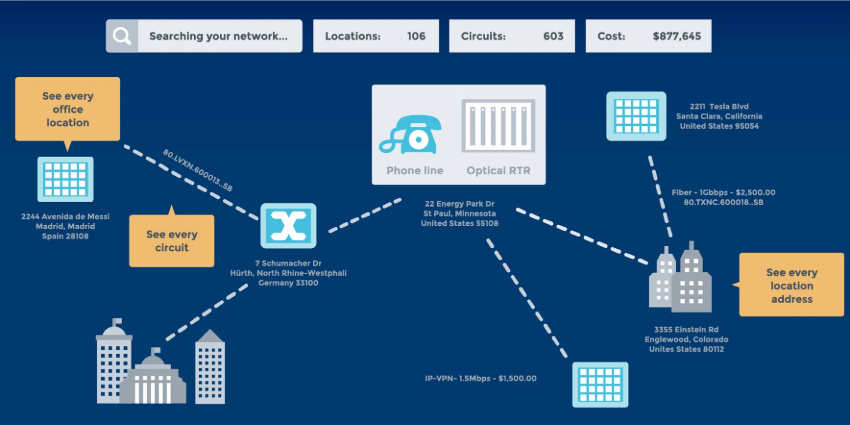Can you really say your communications are unified if your contact center isn’t included? After all, what is a contact center, if not an essential way, to communicate with your customers?
For too long, businesses’ contact centers have been separate from the rest of their communications, often using disparate and incompatible systems. But organizations have begun to understand that their contact center needs to include unified communications capabilities and vice-versa. Bringing the two together into a single environment can create a unified digital workplace that gives agents the necessary tools and support.
With that in mind, let’s explore the benefits of integrating UC and CC.
Better Collaboration, More Productivity
Think of all the unified communications features that teams use on a daily basis: softphones, video and audio conferencing, chat, screen sharing, and so on. Now think about the tools your contact center agents use, and you’ll see a lot of overlap.
There are also some unified communications features that your average contact center solution doesn’t include that would help agents with both internal and external communications. These can include features like presence, file sharing, and instant messaging.
No single agent can be expected to know everything, and every agent needs the right tools and knowledge to support their customers. Everyone at a company can and should play a role in managing customer relationships, so when agents have to reach out to subject matter experts within the organization, that expert should be available and able to help. When the communications and contact center platforms are disconnected, this can take time, leaving customers impatient and frustrated.
As UC solutions help employees communicate and collaborate quickly and from anywhere, integrating UC into your contact center can enable agents to access subject matter experts and other resources when needed. Unified communications features can let agents know when those experts are available, connect with them quickly (whether over voice, video, or messaging), and collaborate in real time. This helps them resolve customer issues more efficiently without putting the customer on hold or forwarding their calls to someone else. The expert can even assist in the background, or the agent can bring them all together into the call to resolve the customer’s issue.
An integrated solution lets contact center agents use the same interface and features for internal and external communications. Whether they need to message a coworker or take a call from a customer, it’s all done on the platform they’re familiar with (and they don’t have to switch between apps constantly).
UC solutions also help streamline workflows, which allows contact center agents to manage their time more effectively and handle more customer inquiries.
It’s not just contact center agents that can benefit from the integration—there are several contact center features that can be useful for internal communications. Teams like the help desk, payroll, and HR can use contact center features to provide better assistance within the company. And when innovations get added to one platform (like the growing use of AI in unified communications), both will benefit from it.
A Better Customer Experience Across Channels
Combining UC and CC can improve the user experience for agents, but it also helps improve the customer experience. When agents have the tools they need to work effectively, they can provide customers with better and faster assistance, creating a good experience for everyone involved and reflecting positively on your business.
Additionally, unified communications features can help contact centers with their omnichannel communications. Customers want to be able to reach customer service across multiple channels, including voice, chat, email, and social media. Unified communication helps support communications on all those channels so that customers can reach agents quickly, no matter their preferred method.
“Businesses today understand that customer experience is the key to success, and providing exceptional service requires seamless communication across all channels. By combining unified communications technology with contact center technology, organizations can achieve this goal and more.” Brian Bitsky, Sr. Director UC/ISV/CRM Partnerships at Five 9, said.
“Moreover, combining unified communications with contact center technology enables businesses to access a wealth of customer data, which can be leveraged to make more informed decisions. By analyzing customer interactions, businesses can identify areas for improvement, personalize experiences, and develop new products and services that meet customer needs.”
Reporting and Analytics
Combining UC and CC helps businesses gain more insight into their calls and customer interactions.
Contact center analytics provide insights into metrics like customer satisfaction (CSAT), customer retention, average call time, and busiest call times. Meanwhile, unified communications analytics look at metrics around feature usage, engagement, and performance and provide insights into issues that must be addressed.
There’s no reason these should be separate. Both sets of analytics provide essential insights into performance, customer experience, and even security. Hence, integrating UC and CC provides a comprehensive view of your calls with unified reporting. This helps businesses identify trends, track their KPIs and metrics, and make data-driven decisions to improve the customer experience.
Reduced Costs
One other benefit of an integrated unified communications and contact center solution is potential cost savings. This is primarily the case for vendors that offer a combined UC+CC solution rather than integrating two different platforms.
In many cases, vendors can provide combined UC and CC solutions at a lower cost than separate vendors. As such, companies that get a single-vendor platform tend to have lower overall expenses, in addition to all the other benefits of combining UC and CC.
A Fully Unified Platform
It used to be that most businesses would keep their contact centers detached from the rest of their organization, a virtual island unto itself. But that’s no longer the case. Instead, integrating UC and CC helps keep communications unified, as they should be.
An integrated solution puts many of the capabilities agents and other employees need to communicate into a single place. If there are any features the UC platform has that the contact center doesn’t have (such as real-time transcriptions), the integration will let contact center agents take advantage of these features. With proper integration, everything is within reach, whether agents communicate internally or assist customers.
If your business has a contact center separate from your communications platform, it may be time to integrate them. You may be surprised at the difference it makes for your employees and customers.
Find out more about breaking down the walls between UC and CC with Five9 here.







